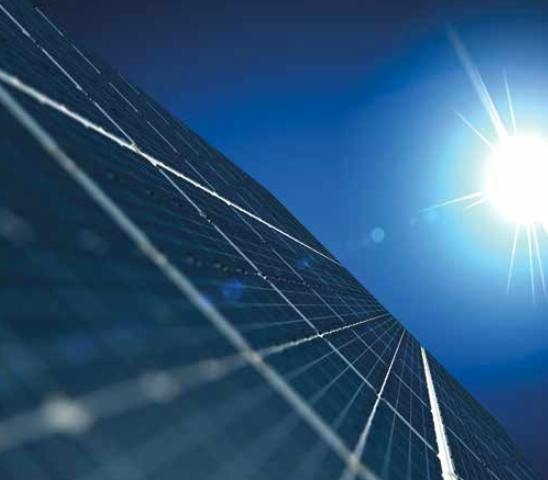The photovoltaic panels are a collection of wafer thin silicone cells laminated together and placed onto a substrate, covered with protective glass and inserted into an aluminium frame to form a single photovoltaic module.
The photovoltaic cells are coated with two semiconductor materials, one of which has a positive charge and the other, a negative charge. When exposed to sunlight some of the light particles or photons are absorbed by the negative semiconductor atoms, which in turn frees electrons to flow back to the positive semiconductor. This flow of electrons is called direct current (DC).
The individual solar cells are then connected in series strings to build voltage and the strings are connected in parallel to build current. This is why the panels are arranged in long rows running across a field, to make this process as efficient as possible.

